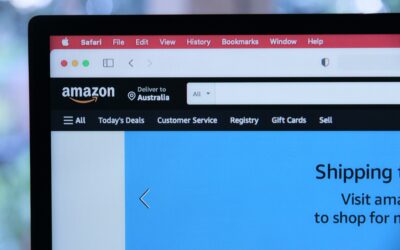What is it?
Whether your goal is to increase public awareness of your corporate brand, alert prospective and existing customers to new products and services, or engage your employees so they coalesce around a common mission, a corporate story presented in a video is a proven and highly effective messaging strategy.
External storytelling focused on the customer helps build a lifelong engagement with the brand. Internal storytelling, with the message focused on employees, helps you reinforce corporate culture or guide employees through changes in the business. Employees can be recruited to participate in the corporate story by sharing their personal experiences and their connection with the company.
Here are few examples of effective corporate storytelling:
Autumn Leaves (created by Digital Media Collab)
Ignite Corporate Story Video (by Digital Media Collab)
ARROW DIGITAL CORPORATE STORY VIDEO
When/Where to use.
A corporate story is an informational video we shoot of your company.
Corporate Story Videos are one of the more flexible videos a company can invest in. It’s a foundational video that can easily establish trust with the viewer.
External uses include landing pages, the About Us page, email newsletters and Youtube.
Internal uses can include training videos covering best practices and onboarding videos for new hires.
A corporate story can (and often does) take the form of a television commercial. As companies roll out new services and launch new products, this presents an opportunity to tell another story while reinforcing the brand identity. Anchoring the video on the homepage of the corporate website means the story is ready to be told every time someone visits. The “About Us” page is another good location, although it does not deliver the same degree of visibility as the homepage.
Corporate stories are also an effective tool in outreach to new customers via email and social media marketing, such as on Facebook, LinkedIn, Instagram, Twitter and Pinterest.
Any time you wish to open an authentic dialog with your customers or employees can be a good time to develop a corporate story. Just like people, corporations evolve, grow and change over time. Each milestone can be an opportunity to tell a new story and build on the corporation’s legacy, as well as build recognition with the target audience.
Corporate stories are an outstanding way to raise awareness, which is usually the first step in a prospect’s journey funnel to becoming a paying customer. Video stories are also used to increase and sustain customer retention by reminding individuals why they were drawn to your company in the first place — or by providing additional reasons for that loyalty.
Why use it.
Storytelling is the most fundamental form of human communication. We crave stories from the time we are old enough to comprehend them. Fulfilling the desire to hear stories is at the heart of moviemaking, novels, plays, serialized television shows, radio (at least once upon a time, in the 1930s and ‘40s) and the theater. A story that connects with its target audience can be deeply satisfying to those individuals. You can build goodwill toward your company among a larger audience, faster, with a single, effective corporate story, than even the most sterling customer service. Corporate stories in video form are quickly absorbed and easily shared, whereas customer service is already expected and baked into the experience that consumers demand. In addition, customer service is all about satisfying and retaining existing customers. Corporate stories can win over a new audience while reinforcing the loyalty of your existing customer base.
This form of storytelling allows you to explain what makes your corporation unique. You can demonstrate why people should care about your business and be a part of it, either as a loyal customer or dedicated employee.
If the goal is to inspire, to engage, to spur the imagination in positive ways that draw the company closer to its audience, corporate storytelling is an effective method of producing results that last.
How to use and Analyse/Measure
Analyzing and measuring the success of a corporate story begins with an understanding of goals. Do you want to attract more customers? Raise brand awareness and alert people to the good work you are doing? Is it about increased employee engagement and fostering internal enthusiasm for the corporation and its objectives? Perhaps you want to produce more effective teams and improve layers of leadership. Knowing the goal will dictate how you measure the success of your corporate story.
Video viewings can be measured through most popular platforms for hosting videos, including Vimeo and YouTube.
Google analytics is an effective tool for tracking traffic to a website. If you haven’t already, you’ll need to obtain an analytics code from Google and embed this code on your website. The next step is to monitor traffic before and after your corporate story is online.
Viewer engagement can be measured in many ways — with Google analytics, viral sharing, blog comments, retweets about the corporate story and activity on sites such as Pinterest.
Analyzing sales results before and after posting a corporate story may be the most effective way to measure success when the objective is customer growth.
Features
Corporate stories work best when they focus on the human element. Sincerity and authenticity are key. Personal pronouns, including “you” and “your” should be used throughout the script to build rapport and connect with the audience. A good corporate story using video will include lots of different voices to reflect the diversity and depth of your workforce.
One way to plan for success is to ask yourself whether you’d be interested in watching a corporate story unfold. Presenting the story idea to your team also provides useful feedback before you commit to any particular storytelling strategy. To do this, you’ll need to force your mind to step outside your role within the company and consider the story with fresh eyes, as though you are encountering this content for the first time.
Then you’ll want to identify what connects customers to your company. Is it the product or the lifestyle image the product delivers? Chances are, it’s both, although you may want to emphasize one quality slightly more than the other. By way of example, Beats headphones are perceived as a fashion accessory as much as they are recognized as a high-end consumer electronics product for listening to music.
Remember, all good stories have heroes who face challenges. Your corporate story should highlight how you are the guide that will help solve those challenges facing customers.
For internal messaging, the focus should be on how your team can rise to the occasion when the success of the corporation is linked to the success of all employees.
Process to create
By identifying the human element of your brand, you will be able to see how your company’s products and services improve lives, solve problems and overcome challenges. People relate to stories about people they can identify with.
There are three basic steps you can take to begin developing your corporate story before hiring a video production company to create your content:
- Write down the past, present, and desired future story of your company. Begin with the founder and the reason for launching the business. Include failures and challenges that were encountered along the way, but equally important, how the company transcended those hard times. Be sure to include your vision of how the corporation integrates with — and helps to improve — society at large.
- Now write down why the company exists from the perspective of your customers. People who buy from you are not interested in your profitability. They want to know what you can do to improve their lives and make the world a better place. This should be the given reason the company exists, who their client is, what problems they solve, what vision they have for the future.
- Time to craft a story around the thoughts you wrote down in Step 2. Explain the company’s origins, how it got to where it is today, and where you expect to be tomorrow. Authenticity and honesty are essential. Consumer awareness has never been greater in the history of marketing. People will know if you’re shoveling hyperbole. Insincerity can trigger a terrible blowback and undo all your good efforts to build customer goodwill through the years. If you tell your story from the heart, you will succeed.
In meeting with a video production company, the first step is to brainstorm ideas for the actual production, reach a consensus on messaging, then develop a narrative that gets the message across.
We can then create the most effective story that captivates your target audience.
When your story resonates with people, they remember your company and want to be a part of what you’re doing. Nike conveys an image of winners accomplishing great things, which is what the buyers of athletic shoes want to be. Beats headphones evoke a sense of fashionable style which is arguably more important to the customers who buy the product than the quality of sound it delivers.
Costs
Depending on the scope of your vision and the production values needed to bring it to life, a typical corporate story video can cost anywhere from $1,000 to more than $5,000+ per minute.
There are 5 distinct stages of production for Corporate Stories: Discovery, Pre Production, Production, Post Production, and Delivery. Let’s walk through them.
Digital Media Collab can help with all stages, OR we can partner with you in the phases you need help with.
- Discovery – As your video production company we need to understand the project.. We’ll meet to discuss your vision, goals, and your budget and any other consideration you might have for the project. With Discovery, our mission is to understand your needs and propose a solution that fulfills them.
- Pre-Production – During this planning phase, we’ll begin work on the script for your explainer video project unless you have an in-house writer handling that task. Location scouting, hiring acting talent an AV Script and animatic, style frames. are some of the key aspects of pre-production. A/V Scripts outline each shot in the video and how they all fit together. Think of the storyboards as a blueprint or plan for creating your video.
- Production – At this stage we create we are capturing, 3D modeling and designing all the assets for each scene in your project.your project. This includes capturing video (live production), designing storyboards, getting VO (voice overs), choosing music video and audio to be used in the final explainer video.
- Post Production – Editing, Animating, sound mixing,are some of the steps involved in post production as your project approaches completion. There will be opportunities to review the work in progress and make revisions as necessary. Note: this is true for each phase. We generally do 2 rounds of reasonable revisions.
- Delivery – At this final stage, we provide a digital file of the explainer video to you. We will also, at your request, upload the video to popular viewing platforms where the target audience can find and enjoy your explainer video. Additional services can include tracking and reporting on the success of your project, editing long and short versions, adding different logos to the beginning and end, as well as other needs you may require.
The expense breakdown includes items such as crew, cameras,sound recording equipment, scouting and securing locations, travel, if necessary, as well as hiring professional acting talent, renting wardrobes and any necessary props, voice over, licensing music, shooting the video, and post production, including editing. Your specific needs may include some or all of these production tools.
These things can usually be figured out in a discovery call. Once they scope out the project, an experienced video production company will be able to provide an accurate estimate for delivering your corporate story.
Production time
Expect a minimum of four weeks to conceptualize your corporate story, write the script, shoot the video and complete the project in post-production.
At least two weeks is typically devoted to pre-production, because it is far less expensive to plan wisely than to recalibrate once you’re deep into the project. As Benjamin Franklin said, “By failing to prepare, you are preparing to fail.” Comprehensive pre-production is essential to success.
The average time is about six weeks for a 2-3 minute video from concept to completion, although the time requirement can increase with the scope of the production. A simple in-house shoot at the company headquarters can likely be produced and ready to post online within a month or less. Location work, elaborate production values, special effects and other unique requirements will increase the time to completion.
Benefits
- Establish yourself as an authority in your field.
- Make more fans faster by building trust.
- Gently share sensitive information for people trying to make a difficult decision.
- Communicate the same message with accuracy every time.
- Connect your work with your message in a clear, compelling format.
- Prevent your target audience from having to think too hard.
- Begin to establish trust with a peek into your culture.
A corporate story presented in a professional video explains your brand and mission in the way audiences prefer to receive content. Fully one-third of all online activity involves watching videos. Give the people what they want.
Corporate stories enable you to show your customers and prospects the faces of the people behind the scenes who make the magic happen at your company. Suddenly, the corporation is no longer a faceless abstraction but the professional home of real people doing real work to make your customers’ lives better. That’s the power of testimonials in corporate storytelling.
Visual storytelling also gets your message across in a fraction of the time it would take to tell your corporate story in text. Online attention spans are fleeting. Presented with the option of viewing a professionally produced 5-minute video or reading 10 pages of text, a majority of your target audience is going to click the video first. Debating literacy in modern society is another topic for another time and place. The simple, practical reality is that people are more receptive to marketing messages delivered as video content. And that’s actually good news because viewing videos is essentially a passive activity that encourages an audience to linger longer than they otherwise would if extensive reading was required to convey the same amount of information.
Testimonials
“Reliability and delivery. Best creative service around. Not a lot of companies out there that I trust like I do them.”
— Mike Crow, Orthofix.
“Excellent to work with. Very creative and talented. Easy to work with. Creative solutions. Delivered in a timely manner.”
— Brian Czock, SonLight Productions.




